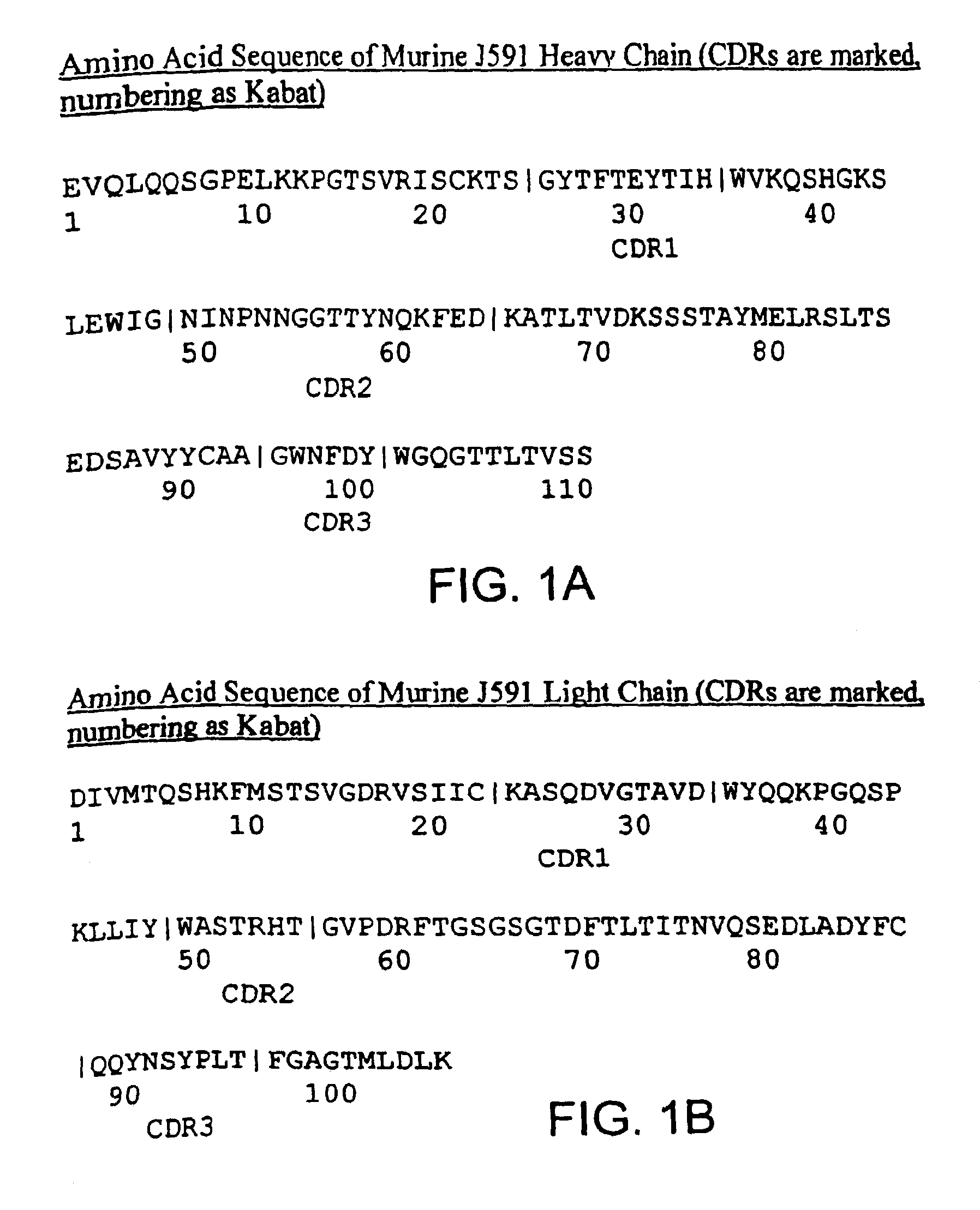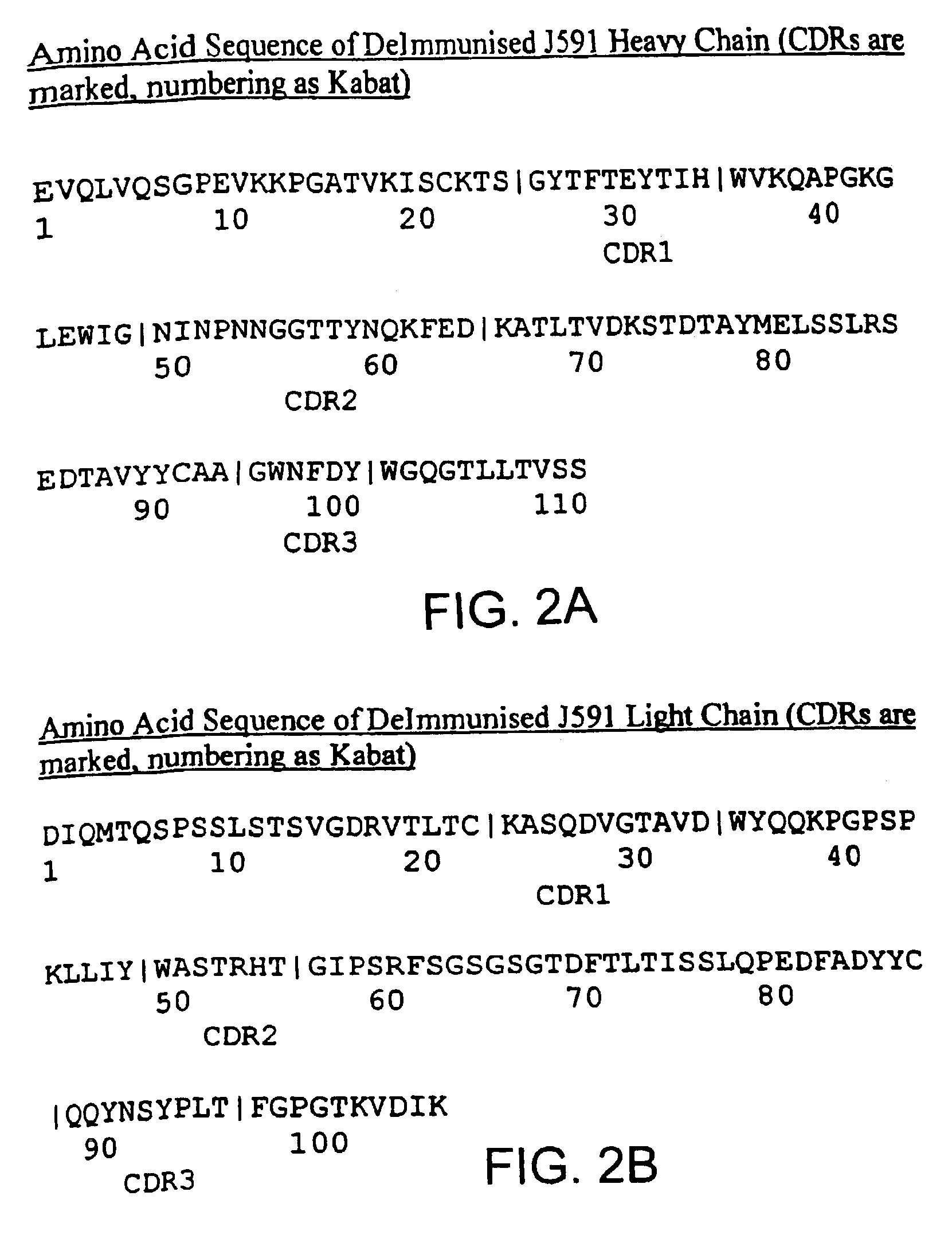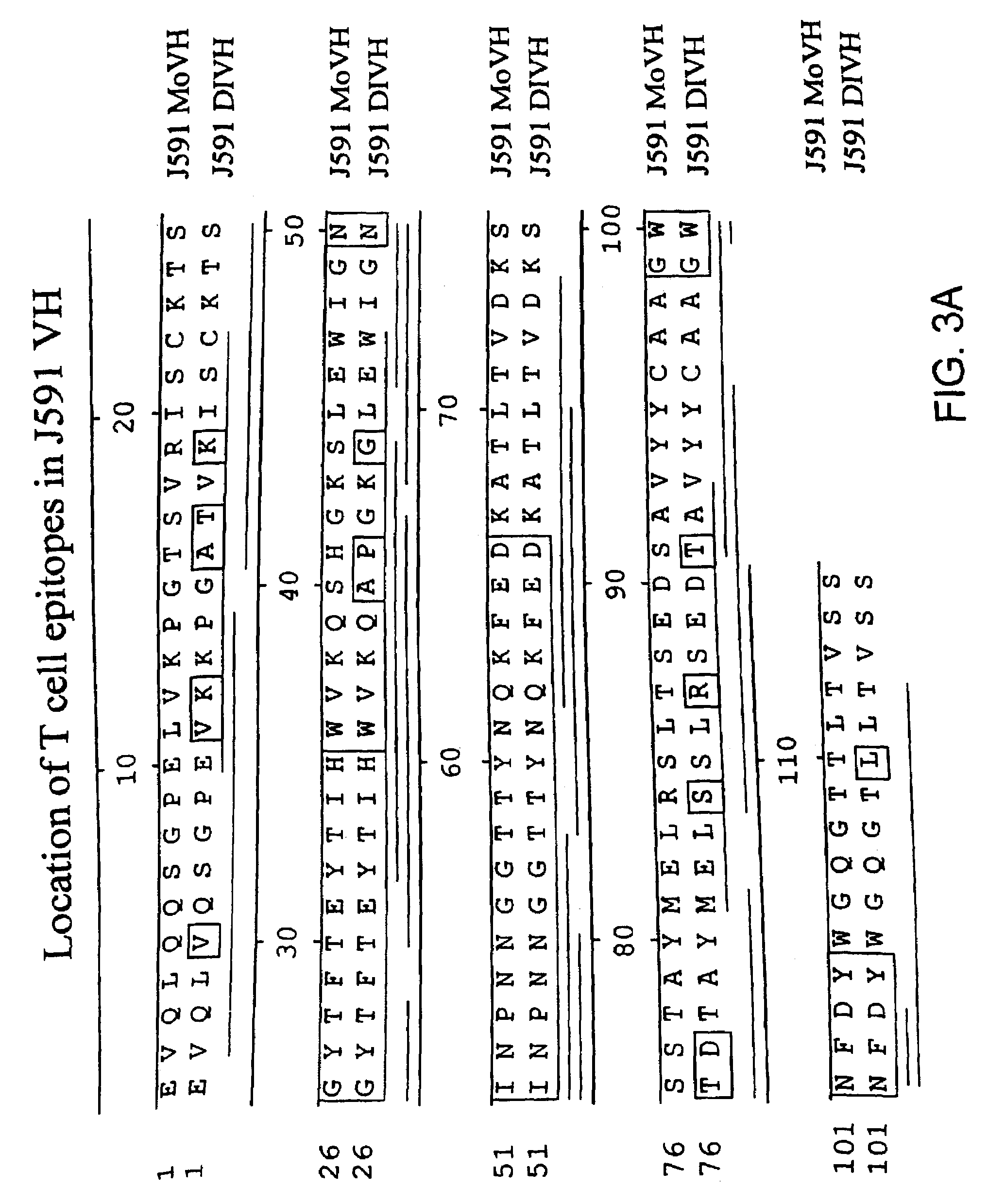Methods of treating prostate cancer with anti-prostate specific membrane antigen antibodies
a prostate cancer and specific membrane technology, applied in the direction of antibody medical ingredients, pharmaceutical active ingredients, drug compositions, etc., can solve the problems of limited systemic therapy, poor treatment effect of cytotoxic chemotherapy, and very limited treatment of prostate cancer, so as to improve the modalities of preventing and treating.
- Summary
- Abstract
- Description
- Claims
- Application Information
AI Technical Summary
Benefits of technology
Problems solved by technology
Method used
Image
Examples
example 1
Chelation Of Anti-PSMA Antibodies To 111Indium, 90Yttrium, and 177Lutetium
[0459]The modified anti-PSMA monoclonal antibodies can be radiolabeled with 111Indium, 90Yttrium, or 177Lutetium by directly coupling one of the four carboxylic acid groups of the chelator 1,4,7,10-tetraazacyclododecane-N,N′,N″,N′″-tetraacetic acid (DOTA) to primary amines present on the surface of the antibodies. The DOTA conjugated antibody is then purified, sterile filtered, and vialed. Prior to use, the purified antibodies can be mixed with the desired radiolabel which binds to DOTA.
Chelation Process
[0460]Monoclonal antibody deJ591 was conjugated with 1,4,7,10-tetraazacyclododecane-N,N′,N″,N′″-tetraacetic acid (DOTA) and subsequently radiolabeled with 111In, 90Y and 177Lu. Radiolabeling and quality control tests were performed on three separate vials of clinical grade mAb deJ591.
[0461]All reagents used in the conjugation and purification of deJ591 were made from pyrogen-free water. In the specific case of ...
example 2
Pharmacokinetics and Biodistribution of 131I- and 111In-labeled deJ591 and Murine J415 in Nude Mice Bearing LNCaP Human Prostate Tumors
[0501]In nude mice bearing PSMA-positive human LNCaP tumors, the pharmacokinetics, biodistribution and tumor uptake of monoclonal deJ591 and murine J415 antibodies radiolabeled with 131I or 111In was analyzed. Autoradiographic studies were performed to identify intra-tumoral distribution of radiolabeled MAbs.
[0502]deJ591 and J415 were labeled with 131I using the iodogen method (see Franker and Speck (1978), Biochem Biophys Res Commun 80:849-57) to a specific activity of 400 MBq / mg (21, 23). For 111In labeling, the J415 and deJ591 antibodies were first conjugated with 1,4,7,1 0-tetraazacyclododecane-N,N′,N″,N′″-tetraacetic acid (DOTA) and then labeled with 111In to produce specific activities of 200 MBq / mg.
[0503]Prostate carcinoma cell lines LNCaP, DU145 and PC3 (American Type Culture Collection, Rockville, Md.) were grown in RPMI 1640, supplemented w...
example 3
Animal Studies Using 90Y-DOTA-deJ591
[0514]In in vitro and in vivo animal models, 90Y-DOTA-deJ591 has demonstrated substantial anti-tumor activity. In these studies, immunodeficient ‘nude’ mice were implanted intramuscularly with PSMA-expressing human prostate cancer cells (LNCaP). In some studies, the same animals were simultaneously implanted in the opposite thigh with a PSMA-absent human prostate cancer line (PC3). Cancers were allowed to ‘establish’ for a period of approximately 2 weeks during which time the cancer develops a blood supply allowing further growth. At the time of treatment initiation, the cancer implants average 1.0 cm in diameter (or approximately 5% of the animal's body weight).
[0515]Four groups of mice received a single injection of 1.3, 3.7, 5.55 or 7.4 MBq of 90Y-DOTA-deJ591. At a 1.3 MBq dose level, there was a mixed response with minimal reduction in tumor growth rate. However, at doses between 3.7-7.4 MBq, a clear anti-tumor dose-response relationship was o...
PUM
| Property | Measurement | Unit |
|---|---|---|
| radioactive | aaaaa | aaaaa |
Abstract
Description
Claims
Application Information
 Login to View More
Login to View More - R&D
- Intellectual Property
- Life Sciences
- Materials
- Tech Scout
- Unparalleled Data Quality
- Higher Quality Content
- 60% Fewer Hallucinations
Browse by: Latest US Patents, China's latest patents, Technical Efficacy Thesaurus, Application Domain, Technology Topic, Popular Technical Reports.
© 2025 PatSnap. All rights reserved.Legal|Privacy policy|Modern Slavery Act Transparency Statement|Sitemap|About US| Contact US: help@patsnap.com



